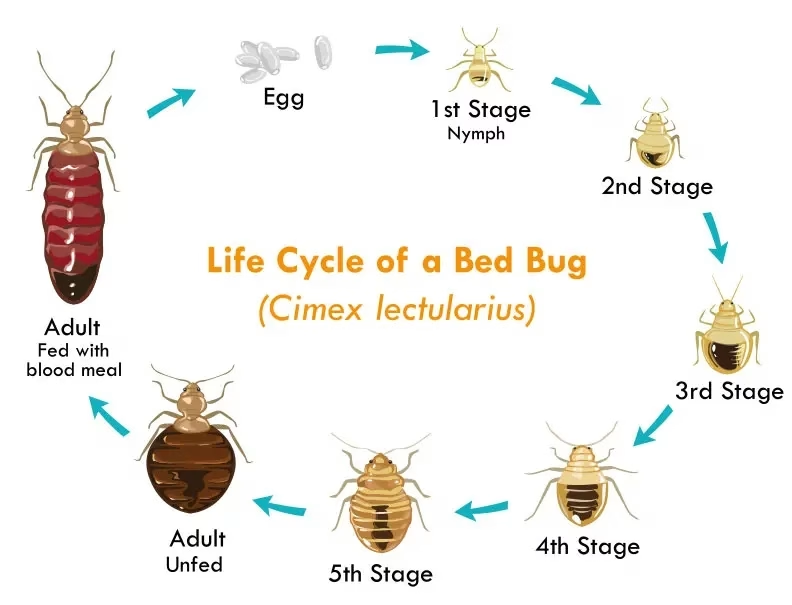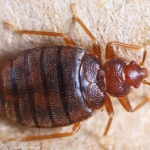Struggling with bed bugs? Let’s talk about their life cycle, because it’s key to getting rid of them. As a pest control expert with 15 years in the field, I’ve seen how these bugs develop from tiny eggs to blood-feeding adults in just about a month. In your home right now, bed bugs could be going through their 6 key life stages: eggs, five nymph phases, and the adult stage. The tricky part? A single female can lay up to 500 eggs in her lifetime. I’m seeing more infestations than ever in my practice, but don’t worry – understanding their cycle is your first step to winning this battle. We’ll look at exactly how to spot and stop them at each stage.
The stages of bed bug life cycle
Discover the five distinct stages of bed bugs:
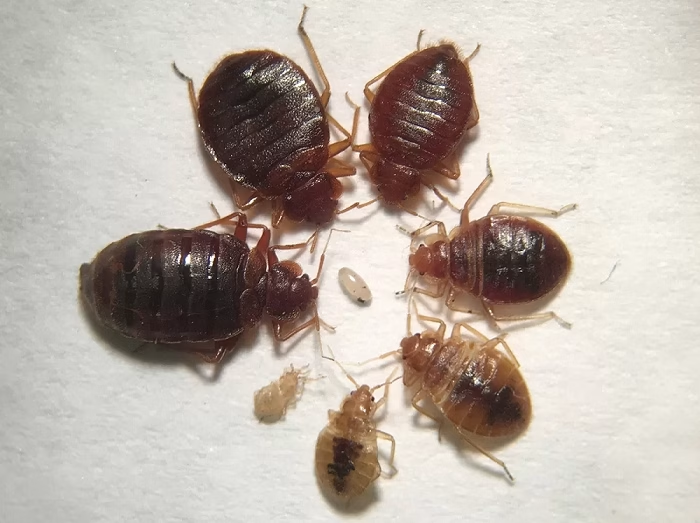
1: The Egg Stage
Let’s start at the beginning of the bed bug life cycle. A female bed bug lays pearly-white eggs, each about the size of a pinhead. These eggs are usually laid in clusters of 1-5 per day, with a single female capable of laying up to 500 eggs in her lifetime. Under normal room temperature, the eggs hatch within 6-10 days.
2: First Nymph Stage
When the eggs hatch, tiny nymphs emerge. At this first stage, they’re translucent and no bigger than a grain of sand. These first-stage nymphs are already hungry – they need a blood meal to molt and grow. Without feeding, they can’t progress to the next stage.
3: Growing Nymph Stages
The bed bug goes through five nymph stages total. After each blood meal, they molt and grow larger. During these stages, they change from translucent to a yellowish-brown color. Each molting stage takes about a week, assuming they’re getting regular meals.
4: Near-Adult Nymph
In the final nymph stages, the bugs are now visible to the naked eye. They’re becoming reddish-brown in color and looking more like adult bed bugs. At this point, they’re about the size of a sesame seed and still need one last meal before reaching maturity.
5: Adult Stage
Finally, the bed bug reaches its adult stage. Now they’re fully grown, about the size of an apple seed, and a mahogany brown color. Adult bed bugs can live for several months up to a year. They’re now ready to reproduce and start the cycle all over again, with females laying eggs after each blood meal.
The reproduction of bed bugs
Now, let’s talk about how these pests multiply – it’s quite remarkable, and not in a good way. A female bed bug starts reproduction right after she’s had a blood meal. From my field observations, I’ve seen that they can lay between 1-7 eggs each day. Here’s the scary part: these determined little insects will produce over 500 eggs during their lifetime!
The reproduction process is unique, and honestly, a bit brutal. Male bed bugs use what we call ‘traumatic insemination’ – they pierce the female’s abdomen to mate. After feeding and mating, bed bugs will find a safe, dark spot to lay their eggs. I often find these egg clusters in mattress seams, headboards, and even behind wallpaper.
Temperature plays a huge role in their breeding success. In my research, I’ve found that they reproduce fastest at room temperature, around 70-80°F. What’s particularly troubling is that a single pregnant female hitchhiking into your home can produce an entire infestation within just a few months.
Here’s what makes their reproduction so efficient:
- Females can lay eggs daily after just one mating session
- Eggs have an incredibly high survival rate in indoor conditions
- They can reproduce year-round if temperatures are right
- Each female can create multiple generations in her lifetime
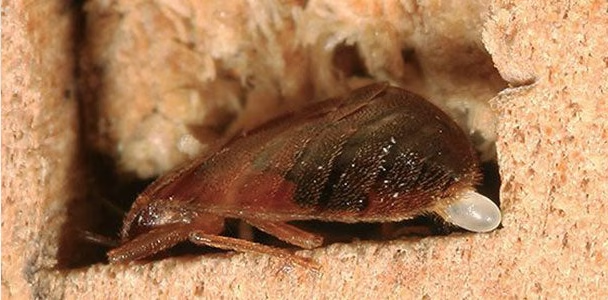
How long do bed bugs live?
You might be shocked by how long these persistent pests can hang around. An adult bed bug’s life span typically ranges from four to six months, but in perfect conditions, these resilient insects survive for up to a year! During their lifetime, bed bugs may endure without food far longer than most insects – I’ve documented cases of survival without feeding for up to 6 months in my research.
Temperature and food availability play crucial roles in their longevity. In my field experience, adult bed bugs thriving in a warm home with regular access to blood meals easily reach their maximum lifetime. The most remarkable aspect of their survival strategy is their ability to enter a semi-dormant state when food becomes scarce.
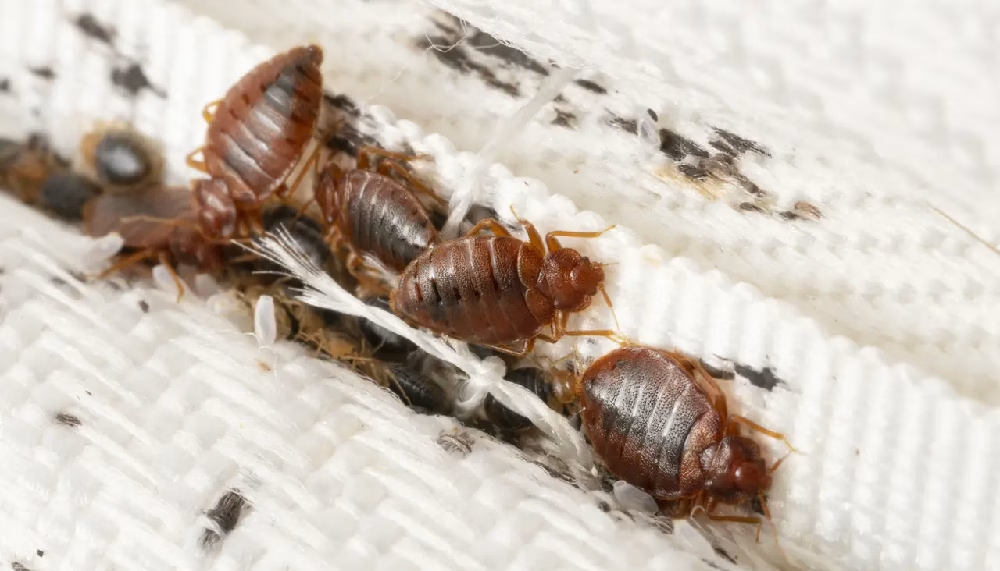
These masters of survival have evolved incredible endurance. Even during long periods without hosts, they simply wait. They reduce their metabolism to a crawl and conserve energy until their next meal. I’ve encountered numerous cases where homeowners believed their infestation had died off, only to face a resurgence months later.
Key factors affecting their lifespan:
- Regular access to blood meals (feeding occurs every 3-7 days when available)
- Optimal temperature conditions (they thrive between 70-80°F)
- Suitable humidity levels (moderate humidity supports longer survival)
- Safe hiding spots away from threats and pesticides
What do bed bug eggs look like?
Spotting bed bug eggs requires a sharp eye and knowing exactly what to look for. These pesky eggs have a distinctive appearance – they’re very small, about the size of a grain of salt, with an elongated oval shape. Fresh eggs have a striking milky white color and a slight sheen that catches the light. In my years of inspecting homes, I’ve found that most people miss them completely without proper guidance.
The eggs aren’t scattered randomly – they follow a specific pattern. Mother bugs typically cluster their eggs in hidden crevices, using a natural glue-like substance to secure them. From my field observations, the most common spots are mattress seams, bed frames, and headboard cracks. Each egg is slightly smaller than a pinhead, but they’re often laid in groups which makes them easier to spot.
A crucial identification tip I’ve learned through experience: viable eggs have a subtle translucent quality, almost like tiny pearls. When they’re close to hatching, you might spot a small dark eye spot through the shell. Empty egg cases, on the other hand, look like small, dry white shells – these are clear signs that nymphs have already emerged.
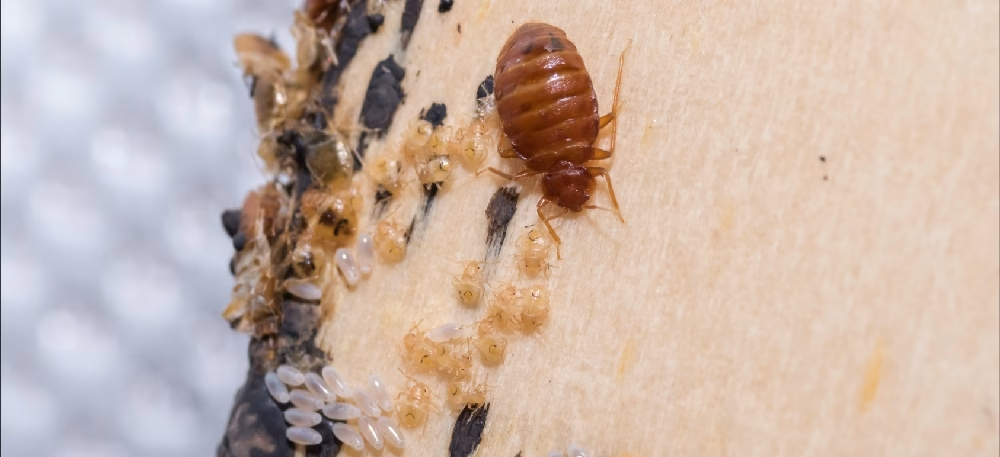
Key identifying features of bed bug eggs:
- Approximately 1mm in length, similar to a grain of rice but much smaller
- Clustered in groups within fabric seams and wood crevices
- Sticky to the touch and firmly attached to surfaces
- Often found alongside dark spotting from adult bug droppings
What is the nymph stage of bed bugs?
The nymph stage marks a crucial period in the bed bug life cycle. After hatching, these immature bed bugs begin their remarkable transformation. Each smallinstar nymph starts nearly transparent, barely visible to the naked eye. Throughout my research, I’ve watched countless nymphs progress through five distinct molting phases, growing larger and darker with every blood meal.
Fascinating changes occur during each stage of development. A newly molted nymph begins pale and translucent, gradually darkening to a light brown after feeding. I’ve observed that without a blood meal, these young bugs remain stuck in their current stage – they simply can’t progress to the next phase. This vulnerability in their life cycle creates an important opportunity for control.
Timing is everything in the nymph phases. Under ideal conditions, with regular access to blood meals, a nymph completes all five stages in about 5-6 weeks. From my field studies, I’ve noted that the duration between molts gets progressively longer with each stage. The first molt might happen within days, while later stages can take over a week.
Key characteristics of nymph development:
- Must feed at least once between each molting stage to grow
- Changes dramatically in size, from pinhead to apple seed dimensions
- Becomes increasingly darker and more oval-shaped with each molt
- Shows growing skill at hiding and seeking hosts as it matures
How to control bed bug infestations?
If you have bedbugs in your home, we’ve put together a comprehensive guide to getting rid of bed bugs. Effective products, heat treatments, tips and tricks. All our tips for solving this unbearable problem.
Sources :
